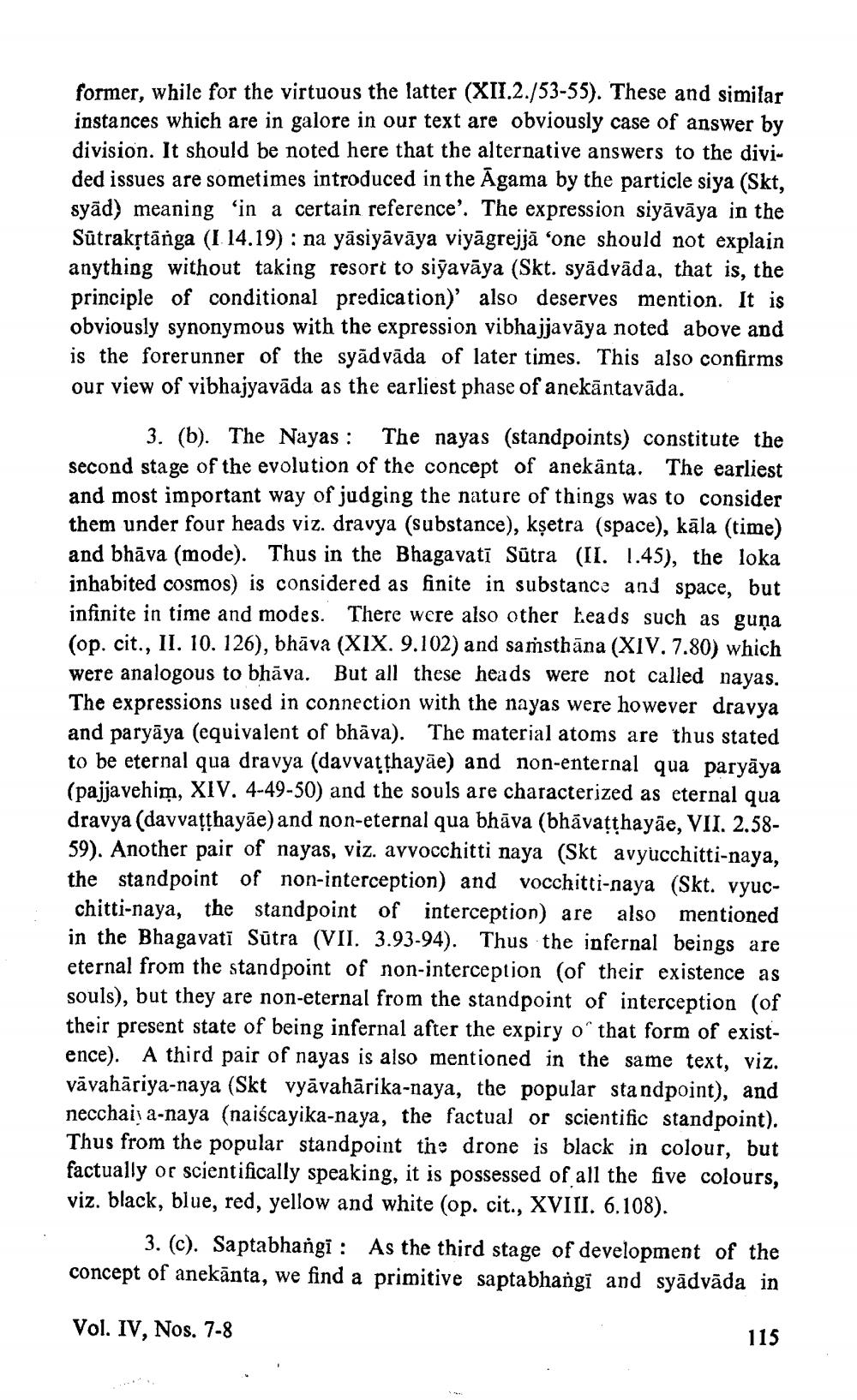________________
former, while for the virtuous the latter (XII.2./53-55). These and similar instances which are in galore in our text are obviously case of answer by division. It should be noted here that the alternative answers to the divided issues are sometimes introduced in the Agama by the particle siya (Skt, syād) meaning in a certain reference'. The expression siyāvāya in the Sūtrakstānga (I 14.19) : na yāsiyāvāya viyāgrejjā ‘one should not explain anything without taking resort to siyavāya (Skt. syādvāda, that is, the principle of conditional predication)' also deserves mention. It is obviously synonymous with the expression vibhajjavāya noted above and is the forerunner of the syādvāda of later times. This also confirms our view of vibhajyavāda as the earliest phase of anekāntavāda.
3. (b). The Nayas : The nayas (standpoints) constitute the second stage of the evolution of the concept of anekānta. The earliest and most important way of judging the nature of things was to consider them under four heads viz. dravya (substance), kșetra (space), kāla (time) and bhāva (mode). Thus in the Bhagavatī Sūtra (II. 1.45), the loka inhabited cosmos) is considered as finite in substance and space, but infinite in time and modes. There were also other beads such as guņa (op. cit., II. 10. 126), bhāva (XIX. 9.102) and samsthāna (XIV. 7.80) which were analogous to bhāva. But all these heads were not called nayas. The expressions used in connection with the nayas were however dravya and paryāya (equivalent of bhāva). The material atoms are thus stated to be eternal qua dravya (davvaļļhayāe) and non-enternal qua paryāya (pajjavehim, XIV. 4-49-50) and the souls are characterized as eternal qua dravya (davvatthayāe) and non-eternal qua bhāva (bhāvatthayāe, VII. 2.5859). Another pair of nayas, viz. avvocchitti naya (Skt avyucchitti-naya, the standpoint of non-interception) and vocchitti-naya (Skt. vyuc
chitti-naya, the standpoint of interception) are also mentioned in the Bhagavati Sūtra (VII. 3.93-94). Thus the infernal beings are eternal from the standpoint of non-interception (of their existence as souls), but they are non-eternal from the standpoint of interception (of their present state of being infernal after the expiry o^ that form of existence). A third pair of nayas is also mentioned in the same text, viz. vāvahāriya-naya (Skt vyāvahārika-naya, the popular standpoint), and neccha a-naya (naiscayika-naya, the factual or scientific standpoint). Thus from the popular standpoint the drone is black in colour, but factually or scientifically speaking, it is possessed of all the five colours, viz. black, blue, red, yellow and white (op. cit., XVIII. 6.108).
3. (c). Saptabhangi : As the third stage of development of the concept of anekānta, we find a primitive saptabhangi and syādvāda in
Vol. IV, Nos. 7-8
115




